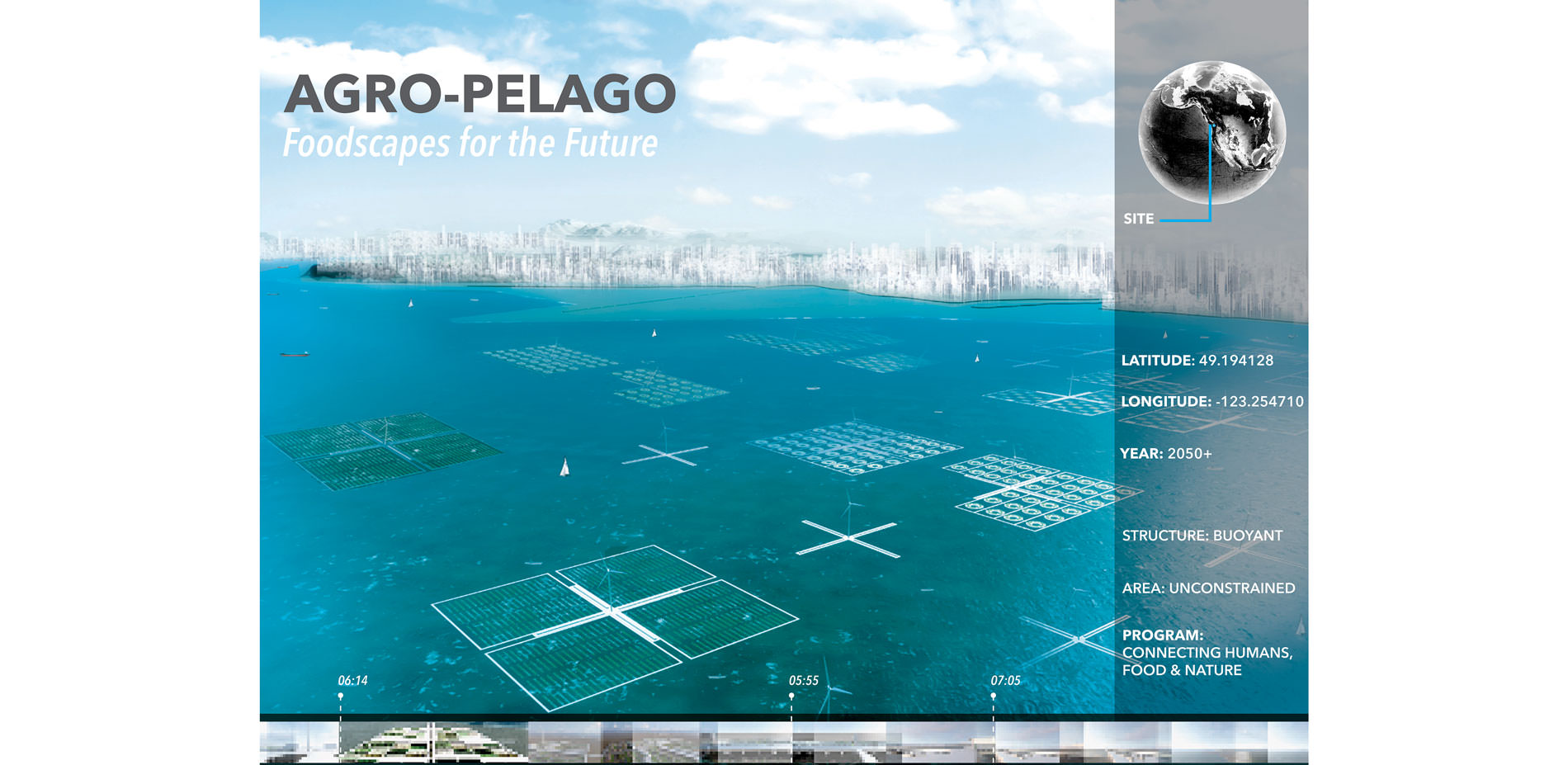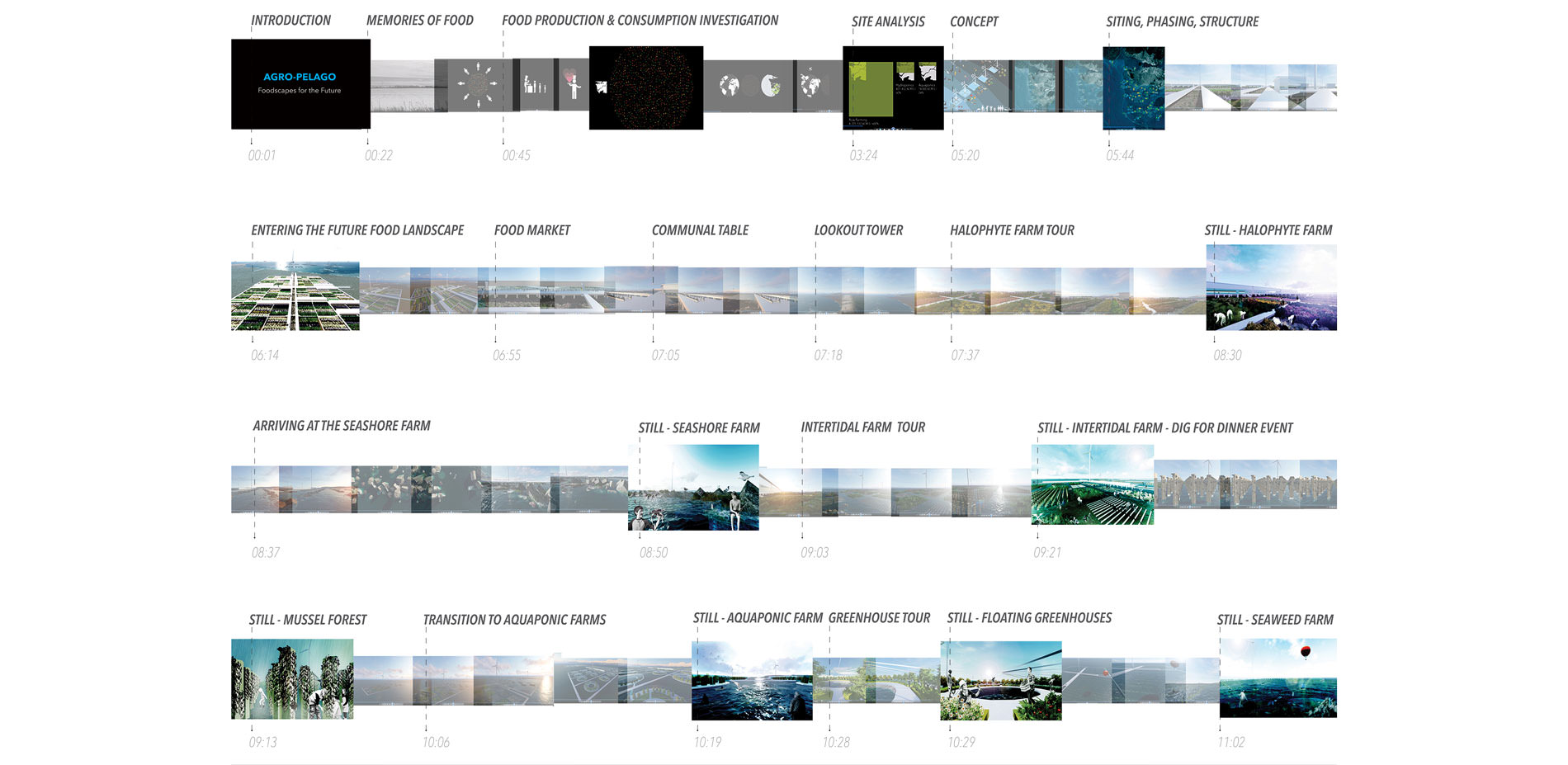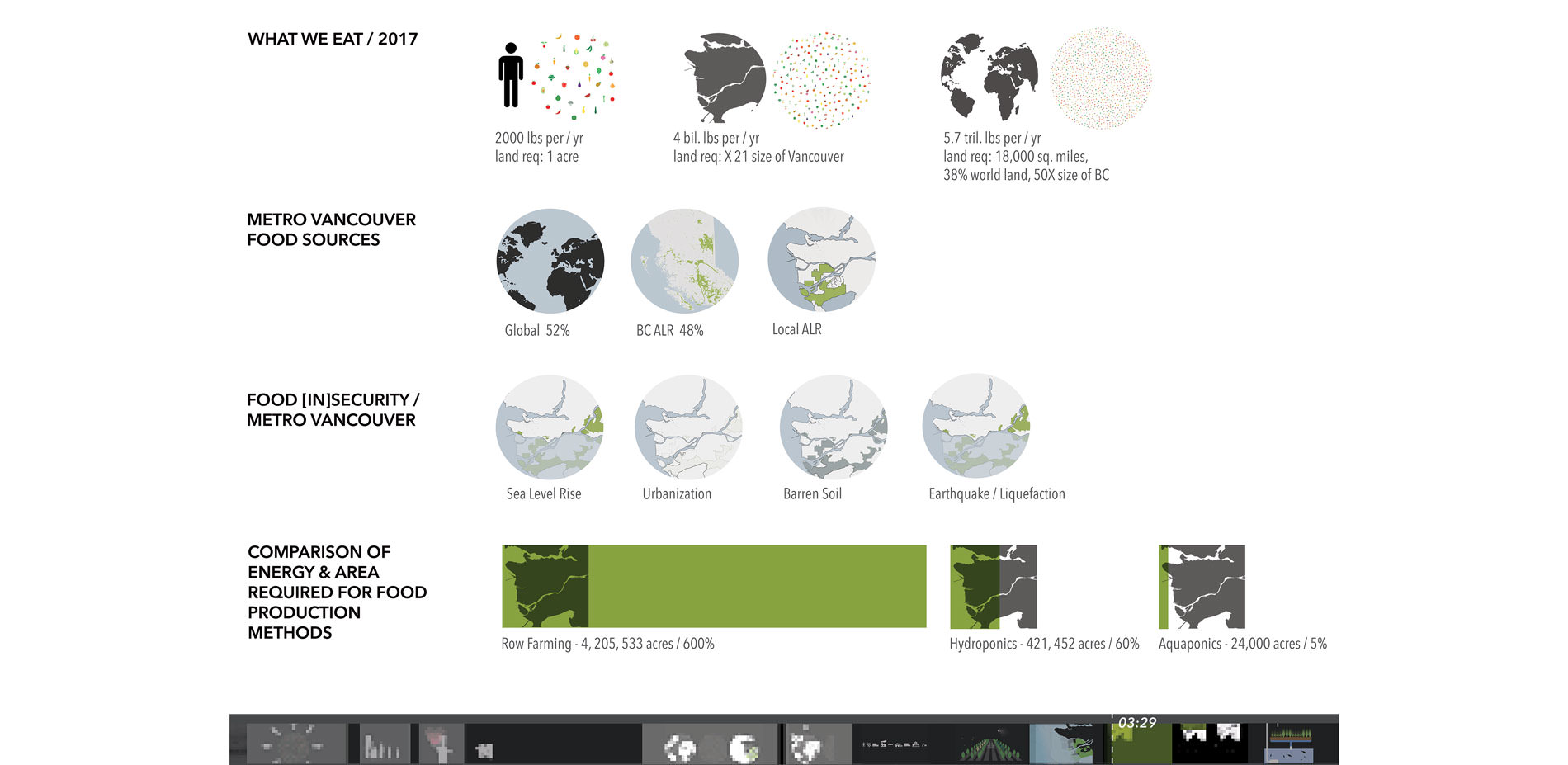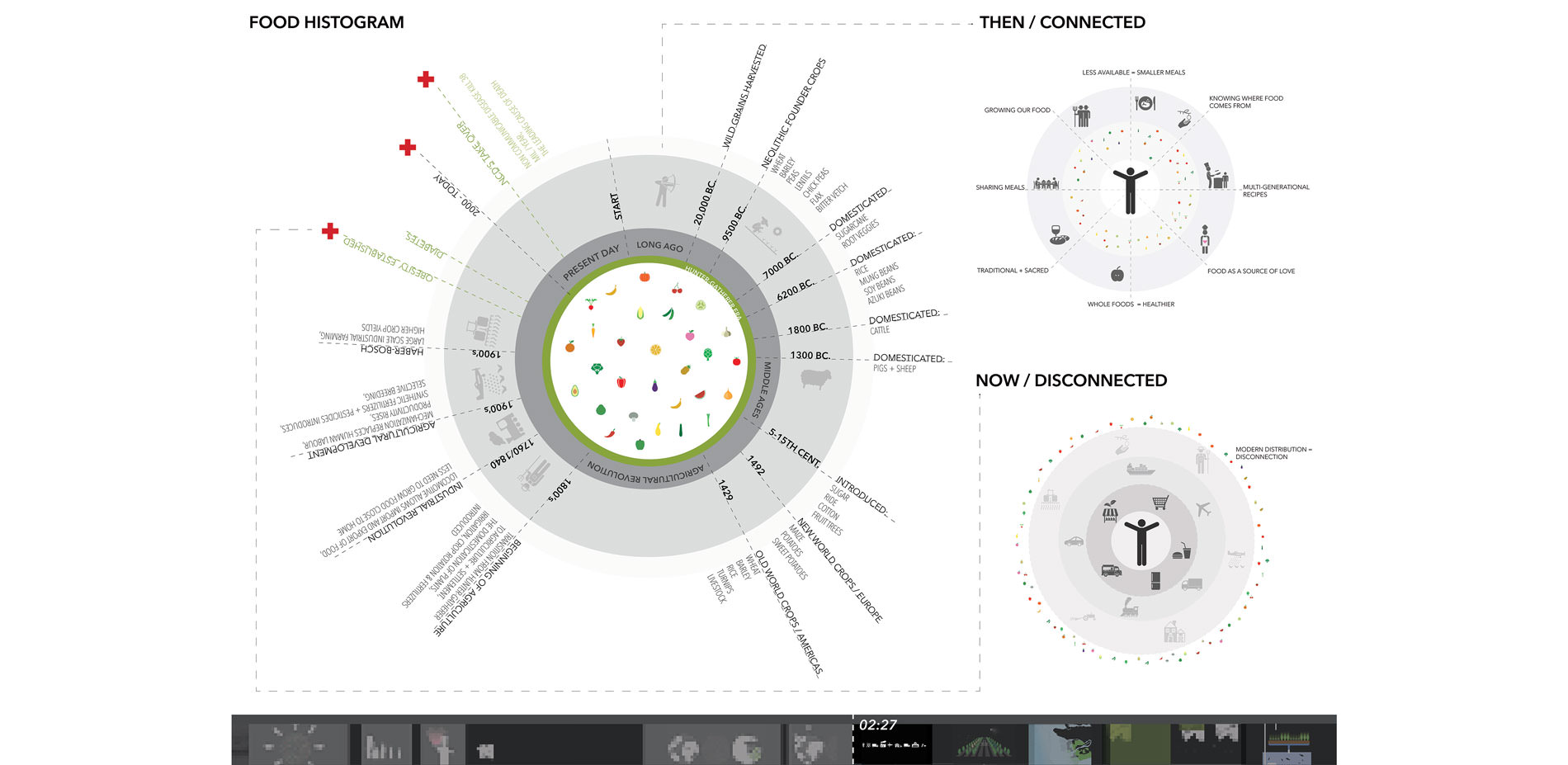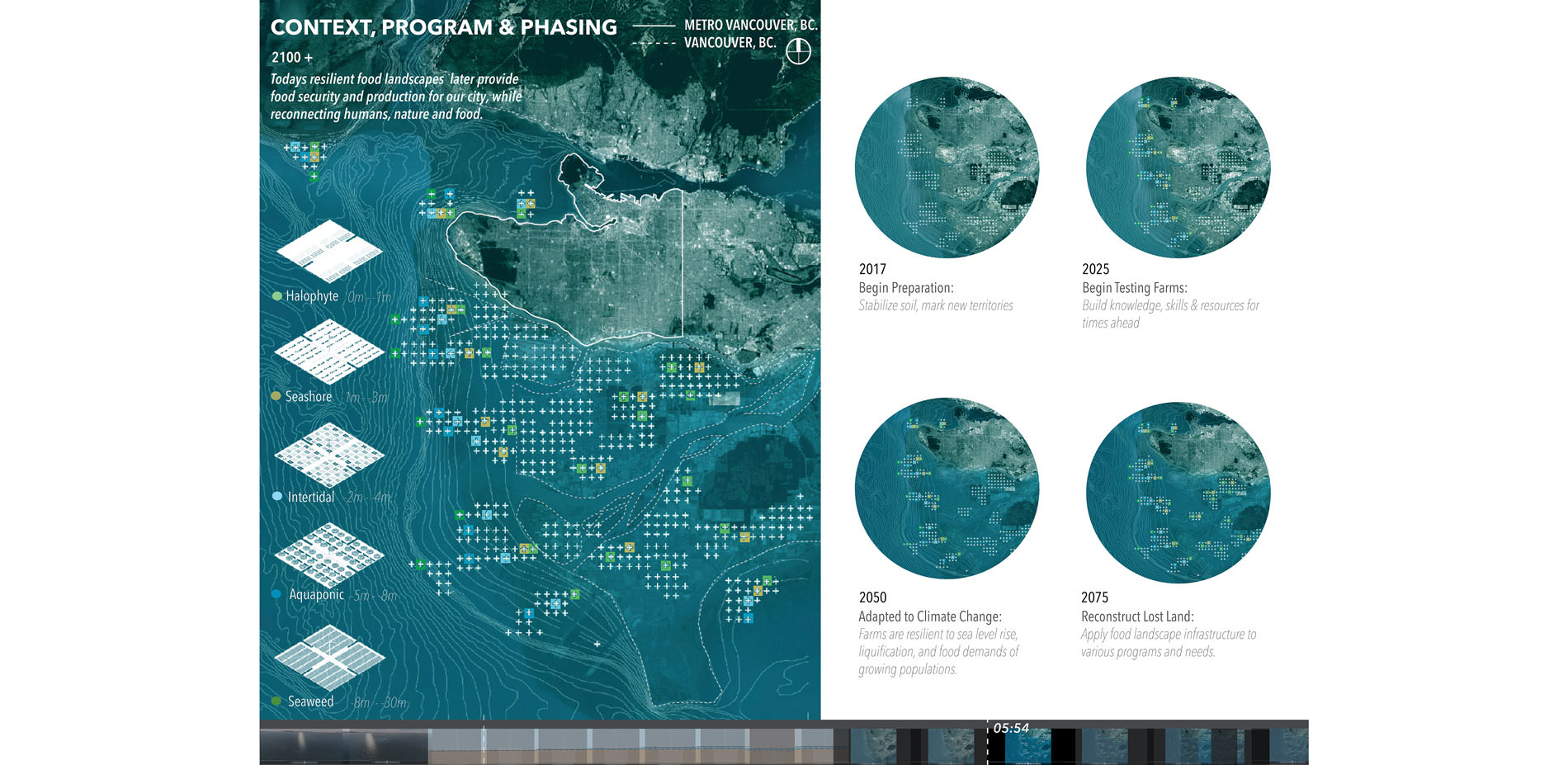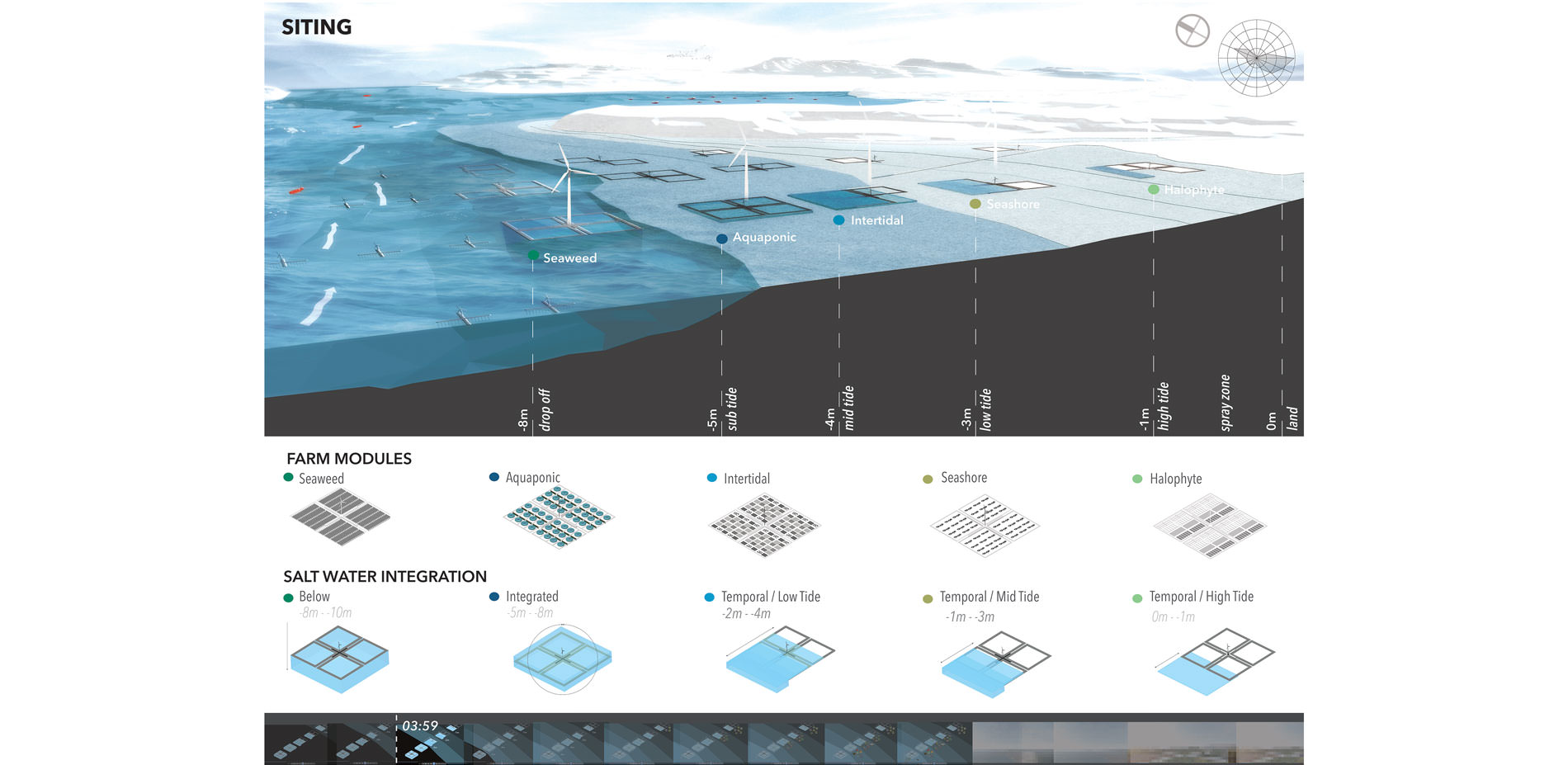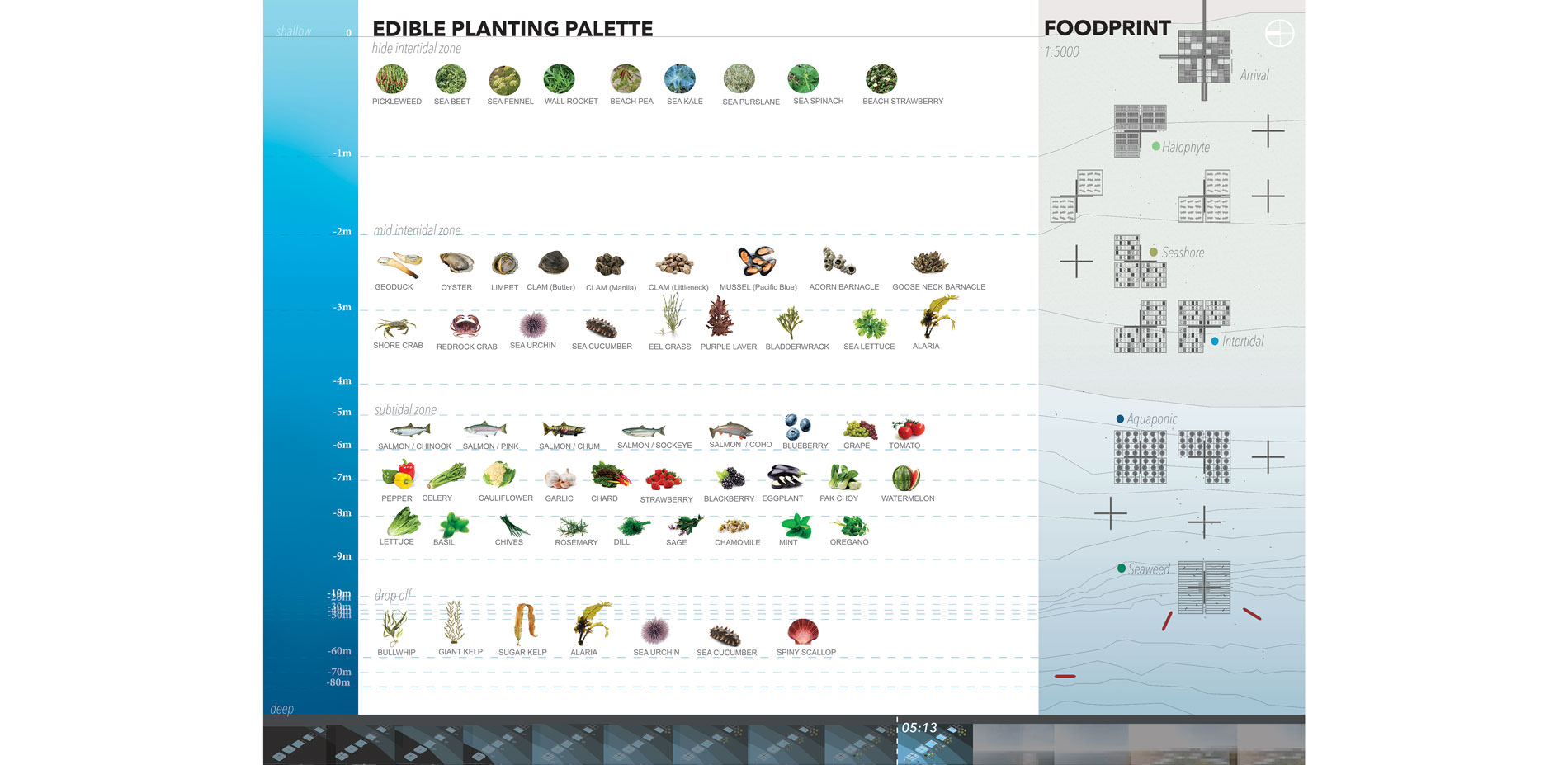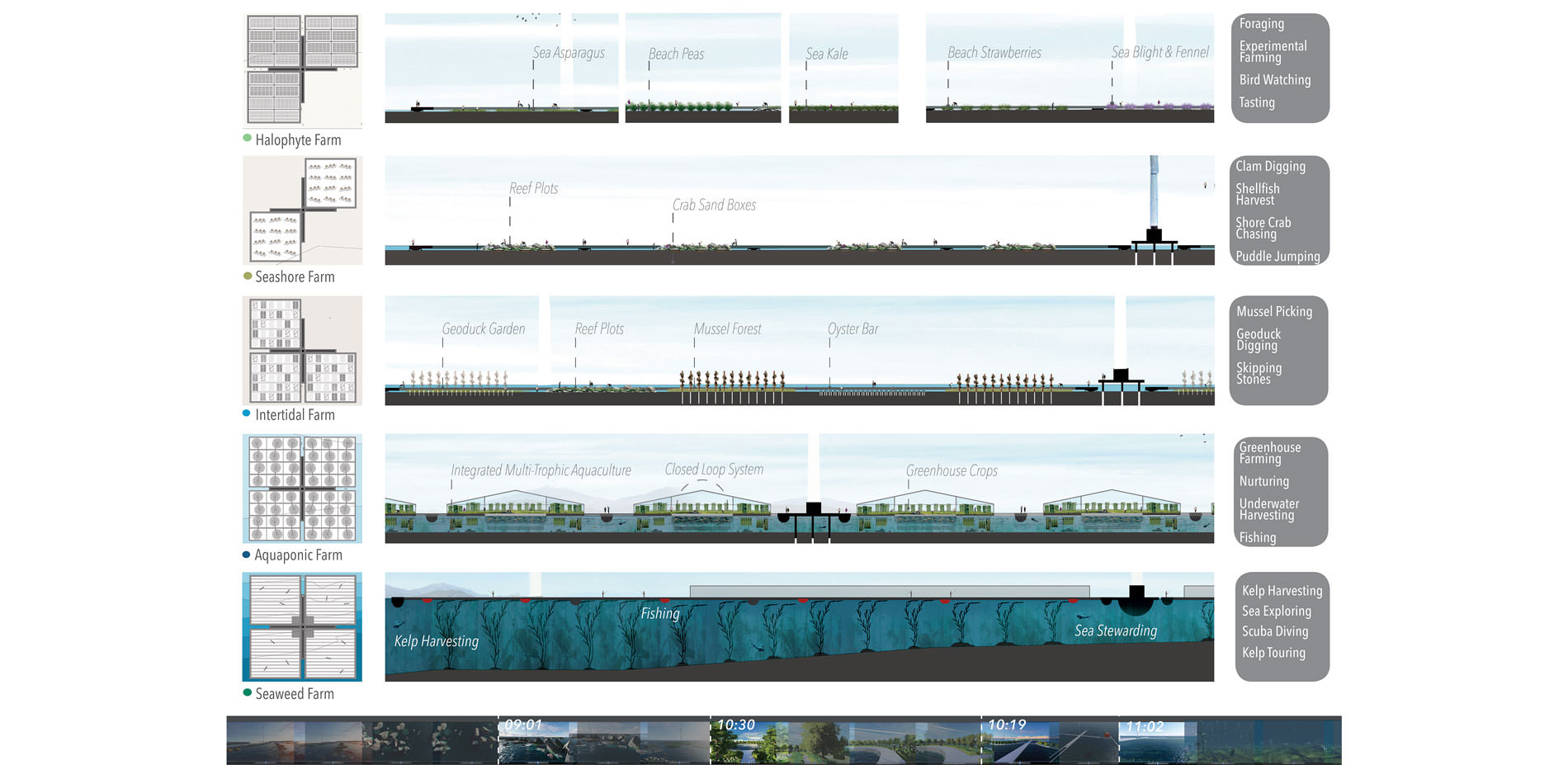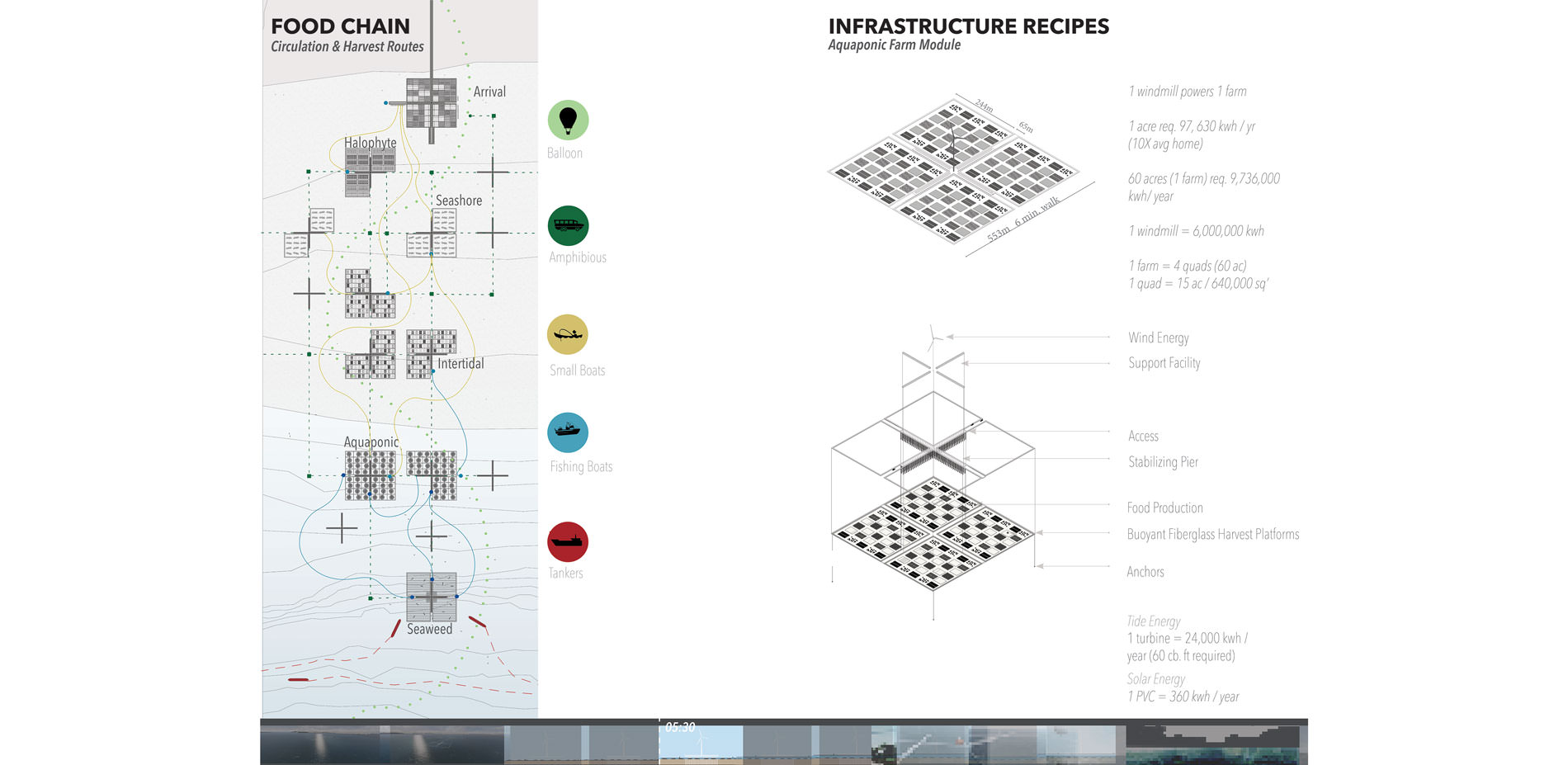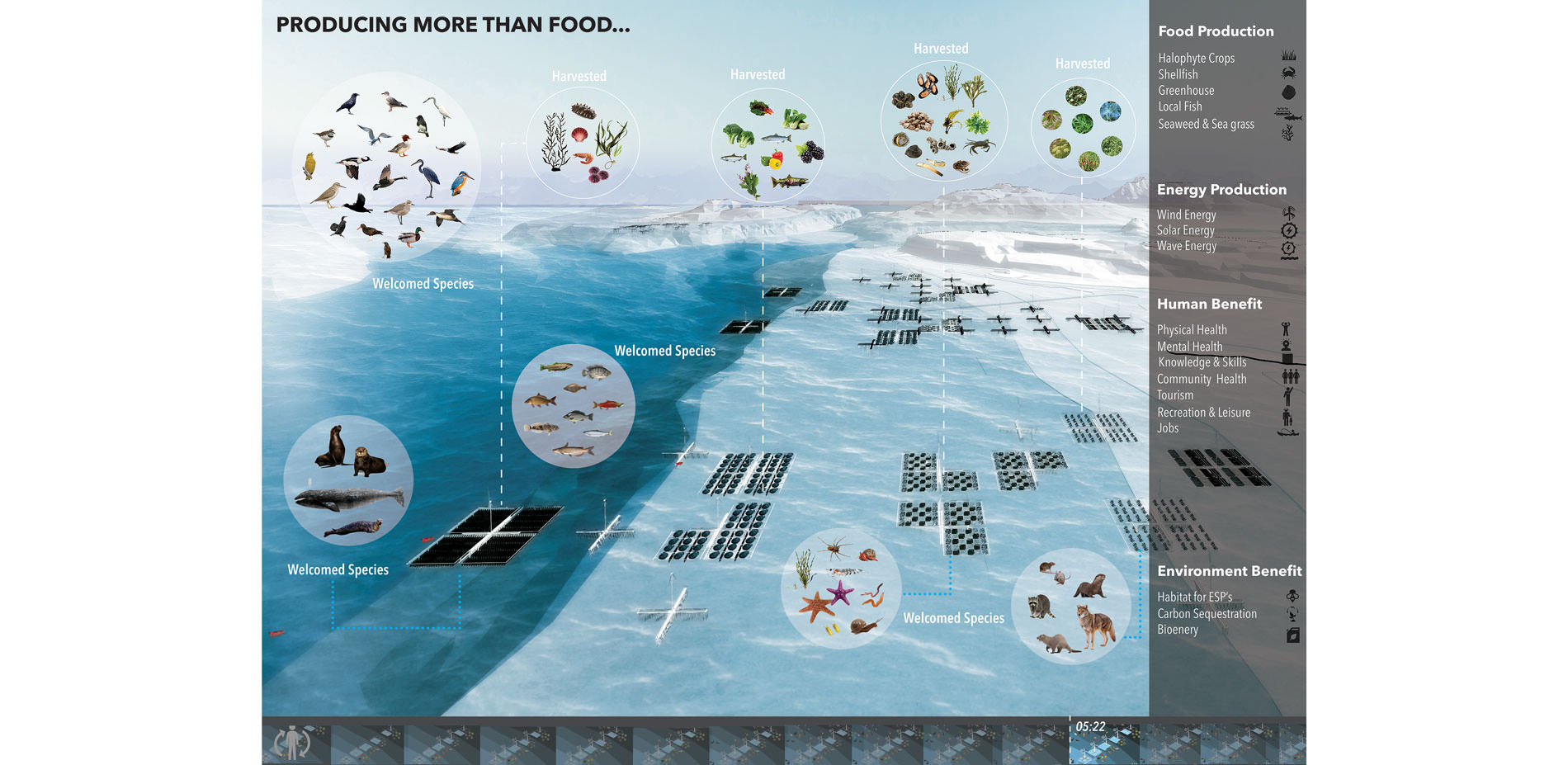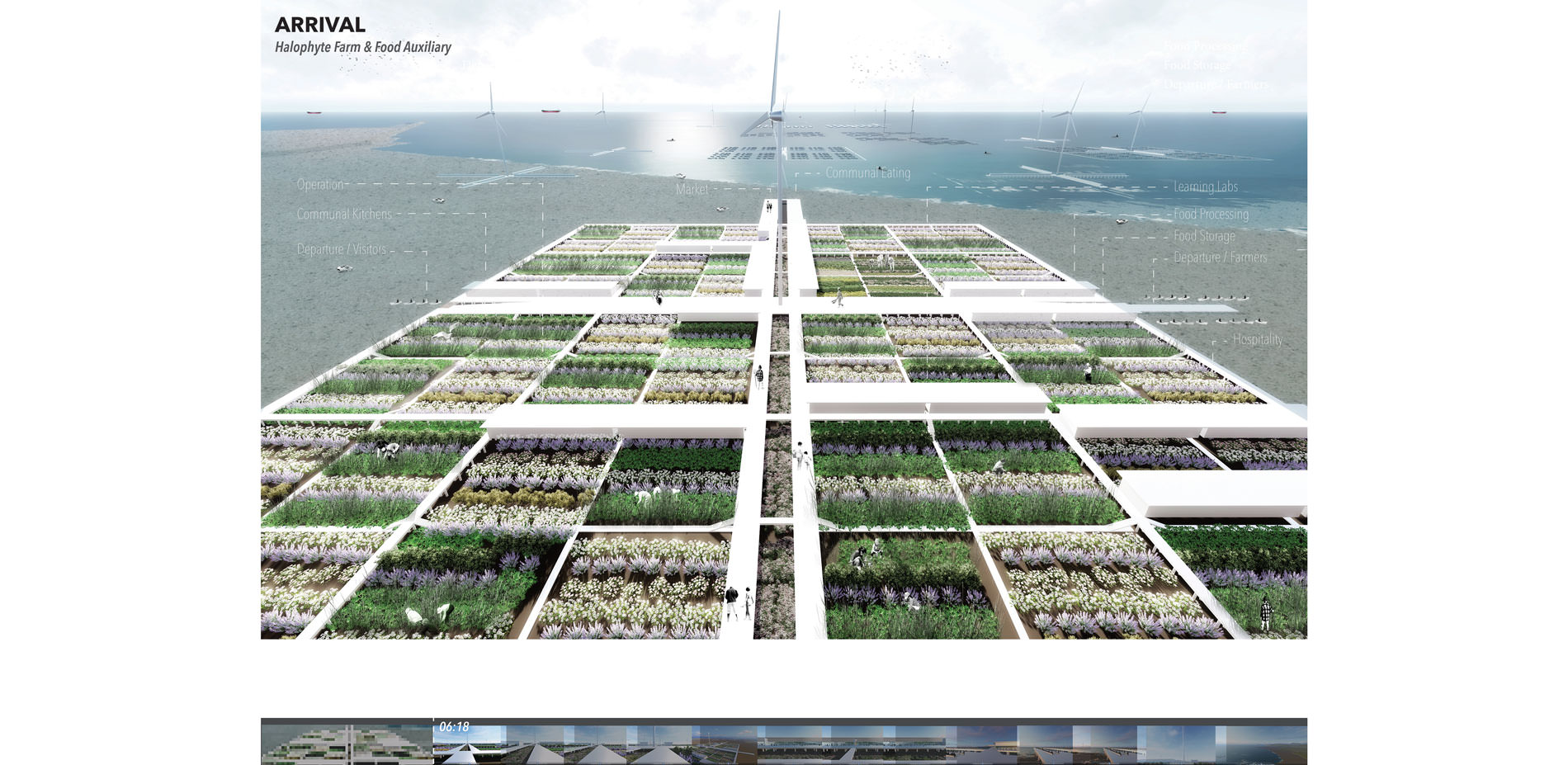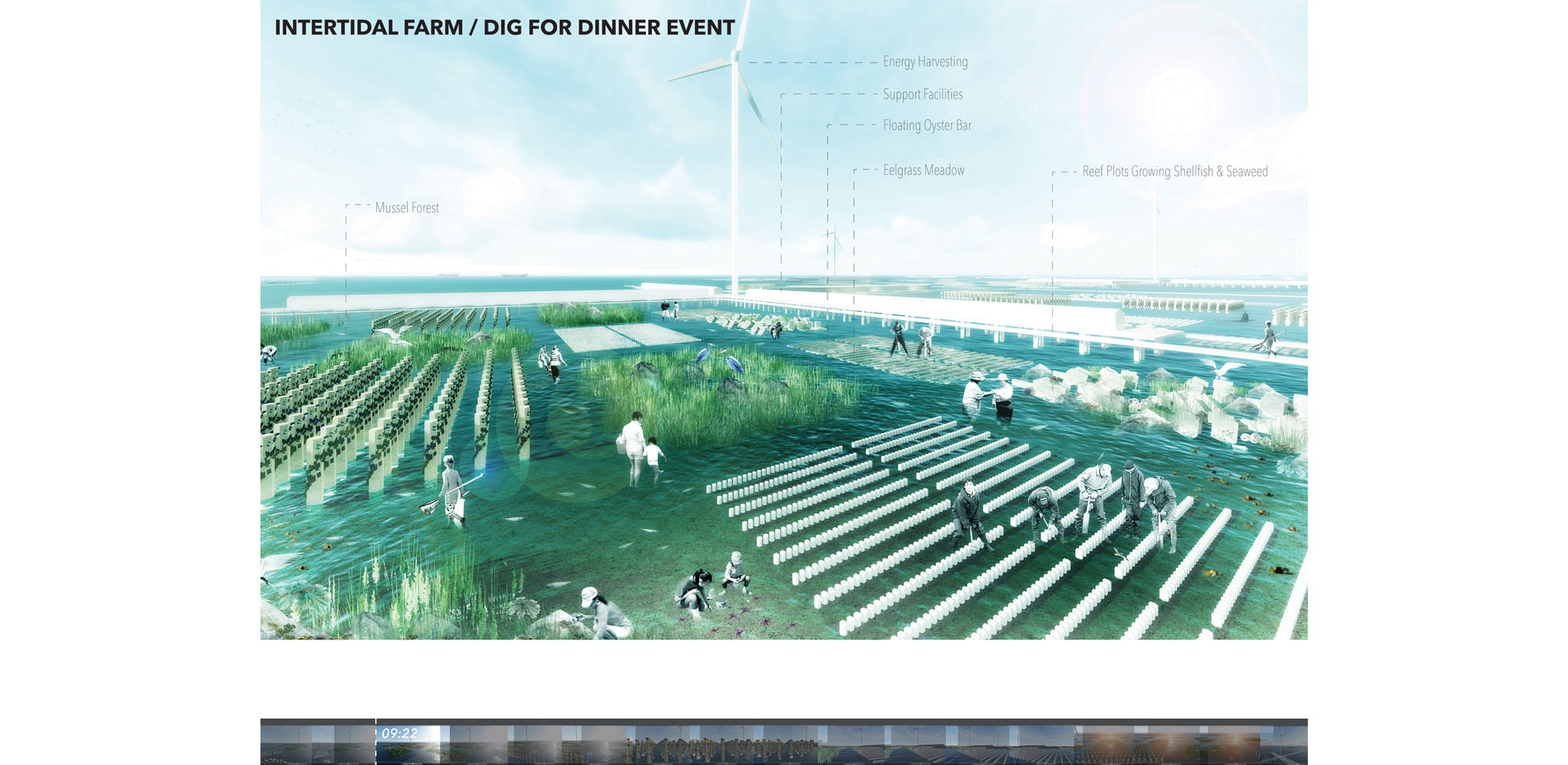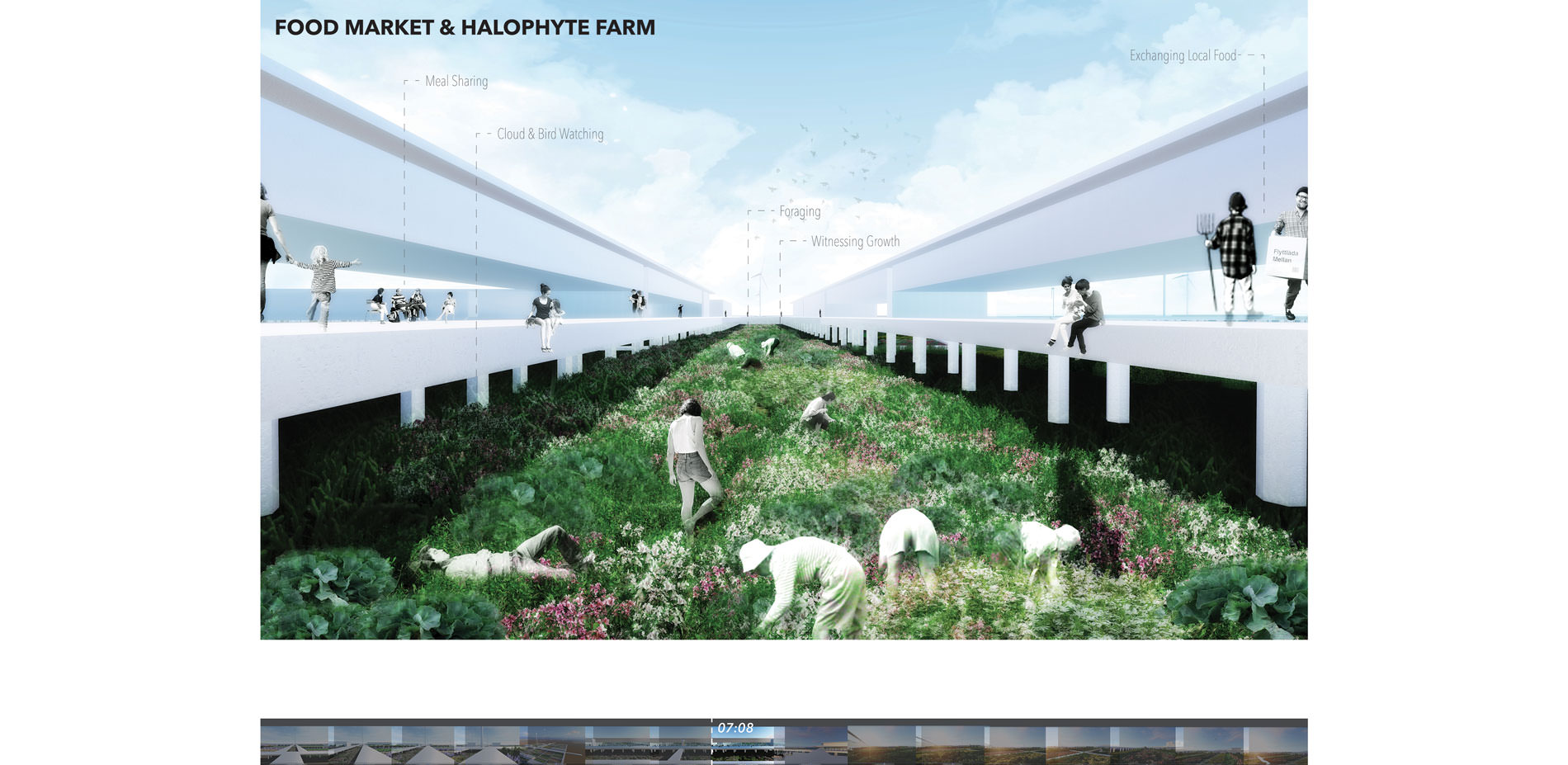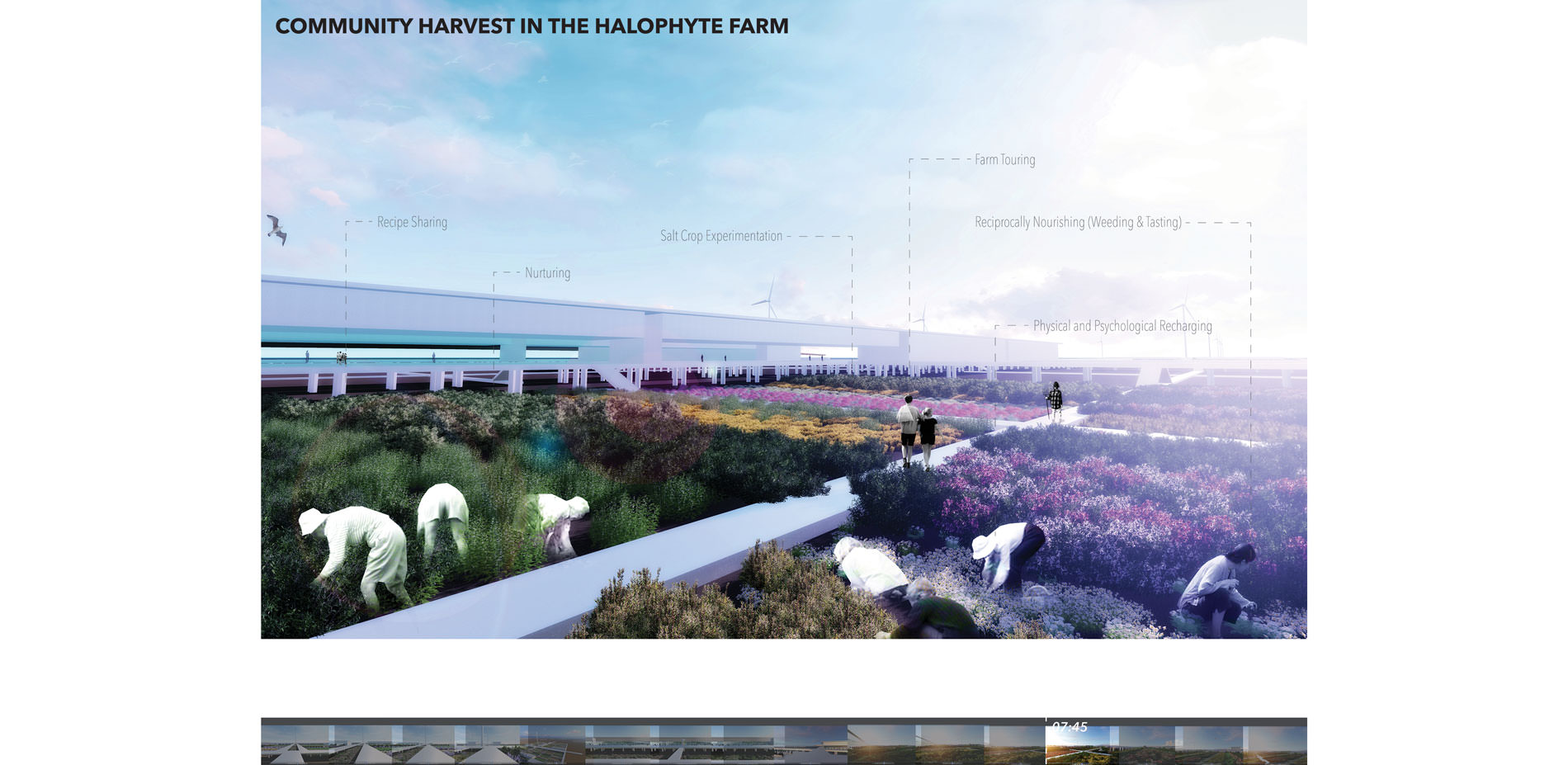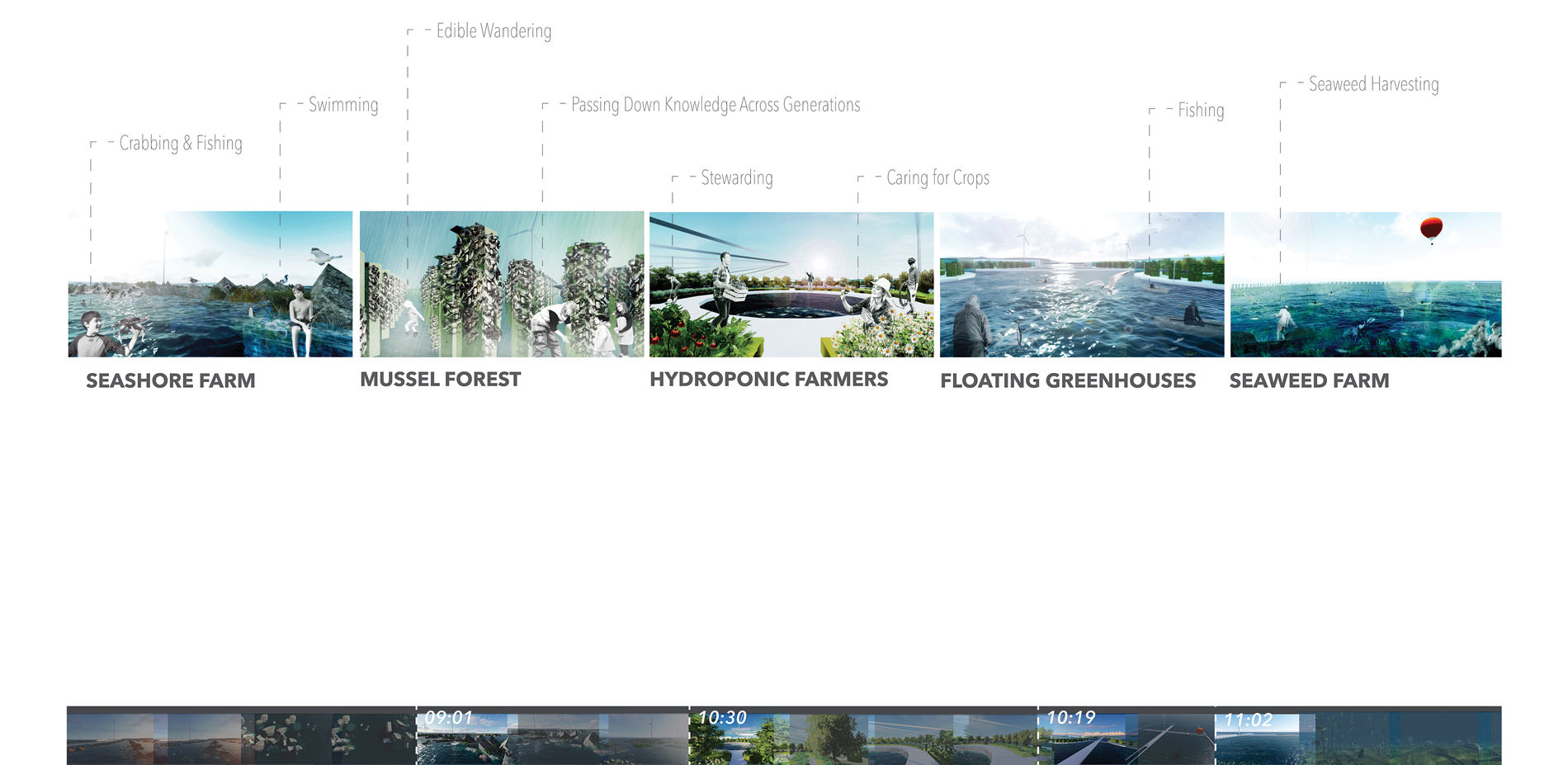Agro-Pelago (Foodscapes for the Future)
HONOR
Communications
Jaclyn Kaloczi, Student ASLA | Faculty Advisors: Susan Herrington; Martin Lewis
University of British Columbia
Like wastewater, this is an issue that landscape architects really need to grab.
- 2017 Awards Jury
PROJECT STATEMENT
What if landscape architects could cultivate the sea to produce food? In the future, agricultural land in coastal areas faces extinction. Climate change and sea level rise floods farmland with salt water, unsustainable farming depletes soils, pollinators and crop varieties, and as land transitions from arable to urbanized, food security disappears. These threats present opportunities for landscape architects with collaboration amongst non-designers, multi-disciplinary industries and people across the globe to re-envision food landscapes for the future. Presented through film, Agro-Pelago explores a time when agricultural land in coastal regions is abolished and dense cities cannot find space for agriculture. Instead, future foodscapes embrace the cultivation of sea while becoming adaptable and resilient to time and context, and reconnecting humans with food and nature. Through film, animated infographics, diagrammatic drawings, narration, sound, and 3d modeling capture atmospheric and experiential qualities of a proposed future food landscape. The film activates awareness, collaboration, innovation and dialogue between the landscape architecture community, multi-disciplinary industries, non-designers and the broader public so together we can look towards the future of food.
PROJECT NARRATIVE
PURPOSE: The purpose of the Agro-Pelago project is to explore and communicate, through film, how landscape architects can secure the seas as viable sites of food production. Agro-Pelago also celebrates the future and how challenges in food production today can inspire the evolution of current food production capabilities to become resilient, adaptable, and responsive to future conditions. Expressed through film, and through the lens of landscape architecture, the project accepts a future scenario when agricultural land is depleted and it is necessary to cultivate new territories to produce food for human survival. It investigates if new territories must be cultivated in the future, such as for food production, how humans can equally and reciprocally nourish the environments which support them. What if there were ways we could feed the landscapes which feed us, inspiring symbiotic relationships so humans and nature could evolve together?
AUDIENCE: The Agro-Pelago film has a limitless audience and speaks to people across the globe, as food production and security is a world-wide challenge. The film is a tool used to communicate this to a wide audience facing various existing and projected food production challenges. The film outlines how these challenges are of critical importance to address to ensure food security, and the opportunity this presents for landscape architecture resolutions. The film uses various methods of motion picture representation to activate awareness, collaboration, innovation and dialogue amongst the landscape architecture community as well as non-designers, multi-disciplinary industries and the broader public. The digital and easy to understand film can be shared online amongst students, professionals, and schools and welcomes viewers of all ages. Having no physical or tangible boundary, it has a limitless audience. Similarly, while the project features a coastal, futuristic food landscape, the relationship it advocates between humans, food and nature, and the importance for food production and security are themes which address people across the globe, amongst generations. Through a landscape architecture perspective, the Agro-Pelago film invites its audience to come together, to celebrate food and nature, and to begin looking innovatively toward the future of food and its timely potential for landscape architecture. PLOT The films introduction contextualizes the project using narrated, animated infographics. Located in Metro Vancouver, it presents intensive research and investigation into food production, consumption and security in a condensed, easily understandable manner. Memories of food in historic times are compared to todays fading relationships between humans and food. Here, the film sparks a discussion about future food landscapes not only within the landscape architecture community, but welcoming to non-designers, other professions, and people of all backgrounds and disciplines of which the subject of food applies to. The film then communicates various threats coastal food landscapes face in the future including sea level rise and salt water flooding low lying agricultural lands, urban development replacing valuable farmland, the intensive energy and spatial requirements needed to operate agricultural facilities, and the damaging impacts of unsustainable farming practices such as use of fertilizers and pesticides depleting soils, pollinators and crop varieties. Following, animated diagrammatic drawings illustrate how these challenges equally present opportunity for landscape architecture interventions and describe the projects concept and goals. Here, a future food landscape is proposed which responds to the projects background research, analysis and investigation, perceiving its unveiled challenges as opportunities for imaginative, innovative design solutions and the evolution of todays food production capabilities for future scenarios. Accepting a time when agricultural land has been lost and dense cities can no longer make space for agriculture, the project unfolds innovative ways to produce food in coastal regions for the future. Inspired by aquaponics and embracing both land and sea into food production, Agro-Pelago proposes the creation of a new site which has never before existed. Sited in various depths of water, a series of future farms embrace todays food production threats, including sea level rise and flooding, and explore the potential for salt water agriculture. In shallow waters, halophyte farms cultivate salt loving crops. Seashore and intertidal farms produce shellfish and seaweeds. At subtidal depths, crops float above water in indoor greenhouses with local fish farmed below. At greater depths, constructed kelp forests create a new industry of seaweed farming. Wind, solar and tide energy is harvested for autonomous operation and to power the surrounding city. As new territories are cultivated to produce food for human consumption, they dualistically create new habitats and ecologies, welcoming humans and nature to cohabit the landscape and discover the joy and reward in working together.
MESSAGE: While focusing on future food landscapes, the film questions the role of design in the future for landscape architects, urban designers, and architects amongst various other professions, non-designers, and the public. It addresses global, future challenges such as climate change affecting food production and the demand for resource consumption posed by growing populations, and asks how future landscapes can help relieve the critical need for resources, such as food, while equally serving as places for recreation, leisure, social and cultural exchange. Importantly, it explores future scenarios when new territories must be cultivated for human survival, such as for food production, and the opportunity this presents for the profession of landscape architecture. Similarly, it inspires the audience to begin imagining the cultivation of not only land in the future, but unexplored geographies such as sea and air. Another important message is how these problems are approach and reimagined through the lens of landscape architecture and how this lens benefits both the environment and those who inhabit it. The film sparks a discussion about the relationships between humans, food and environment amongst a universal audience. The proposed foodscape celebrates an equal exchange between humans and nature and inspires us to question how humans can give back to the landscapes which we take from. In the future when the cultivation of new territories is critical for human survival, can we equally create new habitats and ecologies to reciprocally nourish the environments which support us?
IMPACT AND EFFECTIVENESS: Agro-Pelago illustrates the power of film to communicate vast and complex landscapes. Through film, it effectively depicts the ephemeral qualities of landscape, its ability to operate across time and scales, and its forever changing context. Film as representation tool allows landscape architects to effectively visualize and communicate the functional, programmatic and operation qualities of landscapes such as siting, phasing, infrastructure, and adaptability throughout time. Film welcomes its audience to step inside the intimate, poetic, and atmospheric experiences that make landscape environments a unique and special realm of design. As the landscape architecture profession evolves, it allows landscape architects to now vividly describe complex, large-scale projects which invite clients, non-designers, and community members to walk, fly, or swim through a proposed landscape. Here, viewers are able to better visualize proposed landscapes and their spatial and ephemeral qualities such as lighting, scale, the movement of water, sounds of nature, and texture of plant material. Film is an excellent tool of representation for landscape architects to communicate to the industry, non-designers and a wider public audience who may have little or no training in reading design drawings and struggle to imagine proposed works. In this way, film as a method of communication can advocate for the landscape architecture profession, better represent and articulate projects, effectively engage its viewers, and reach a diverse audience while sparking discussion, ideation, and collaboration.
DISTRIBUTION METHOD: The Agro-Pelago film will be distributed online. With no physical boundary, it has a limitless audience and can be shared amongst the landscape architecture profession, schools, and a wider public audience across the globe. It will be featured on the University of British Columbia’s SALA (School of Architecture and Landscape Architecture) website and thus, shared with the world.
